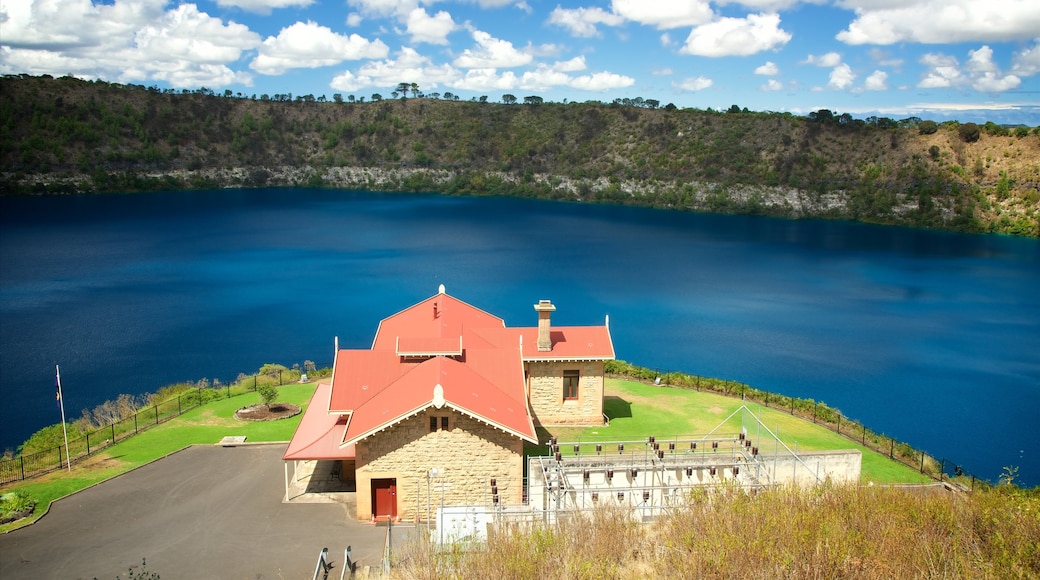The Blue Lake Reserve reflects some of Mount Gambier’s fascinating volcanic history in its magnificent sapphire-colored waters. Created during volcanic events millennia ago, the Blue Lake now contains Mount Gambier’s pure drinking water and some of the town’s most spectacular views. Stroll around the lakeside or join a guided tour to learn about the lake’s mysterious colour and geological history.
Make your way around the relaxing 2.2-mile (3.6-kilometre) trail that loops the boundary of the lake. During your 45-minute walk, you will come across several viewing platforms at different points along the trail, which show the craters, tunnels and valley formations in Mount Gambier’s landscape. Stroll through an underpass with the Blue Lake on one side and Leg of Mutton Lake on the other. Look into the pristine waters of the lake, which are a deep cobalt colour between November and March. The bright blue fades to steely grey in the winter months. It is believed the warmer summer temperatures affect the hue of the lake.
Join a guided tour to learn about the lake’s intriguing formation and the history of the surrounding landscape. The Aquifer Tour brings visitors close to the water’s edge and explains the lake’s history, geology, folklore and Aboriginal cultural heritage.
Bring a picnic to enjoy at the viewing platforms or the woodland reserve on the lake’s eastern banks. You can also stay overnight in the Blue Lake vicinity by booking your place at a nearby camping ground, caravan site, holiday cabin or cottage. While in the area, be sure to check out the Valley Lake crater and the Leg of Mutton Lake crater.
Blue Lake Reserve is less than a mile (1.5 kilometres) from central Mount Gambier. Walk from Mount Gambier Railway Station to the Blue Lake in 20 minutes. The lake is free to visit at any time of the day however, tour fees may vary. Swimming is not permitted at any time. Free parking is available at one of the lake’s northerly lookout areas.













